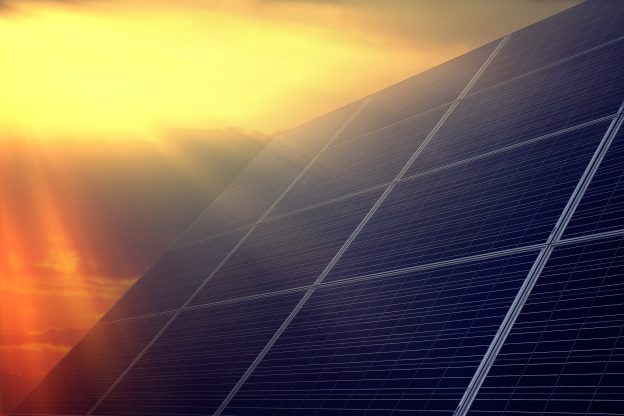PV Industry Chain: Upstream Prices Bottomed Out; the Third Quarter is Expected to Witness Positive Demand
Industry Chain Update: Upstream prices have finally reached their lowest point, and there has been a significant improvement in production scheduling. As for prices, the decline in industrial chain prices was more pronounced in June. However, in July, the inventories of upstream silicon materials and wafers reached a reasonable level, resulting in stabilization. Downstream, there has been a slight rebound in cell and PV EVA prices. As of July 19, dense polysilicon and N-type material prices have rebounded to 66,000 yuan/ton and 76,000 yuan/ton, respectively. Meanwhile, 182mm and 210mm wafer prices have stabilized at 2.8 yuan/pcs and 3.75 yuan/pcs, respectively. P-type (182mm) and N-type cell prices have also slightly rebounded to 0.73 yuan/W and 0.79 yuan/W, respectively. However, the price of PERC modules has fallen by 2% to 1.31-1.35 yuan/W, while the TOPCon module price stands at 1.43 yuan/W (with a price gap of RMB 0.1/W between N-type and P-type modules). Furthermore, due to the bottoming out of polysilicon prices, N-type polysilicon prices have experienced three consecutive weeks of increase. This has resulted in a widening profitability gap for polysilicon, primarily driven by the increasing premium of N-type polysilicon.
Profitability in the upstream sector is expected to reach its lowest point and is likely to improve going forward. The production scheduling experienced a significant increase in July with the bottoming out of industrial chain prices, resulting in a module output of approximately 46GW. Looking ahead to the second half of the year, the overall production scheduling and shipments are expected to continue increasing month-to-month within the industry. By the end of Q3 or the beginning of Q4, it is anticipated that module production scheduling will surpass 50GW, with an annual production reaching more than 600GW.
On the demand side, domestic installed capacity has exceeded expectations, driven by a remarkable 78.4GW increase from January to June, a substantial 154% year-on-year growth. June alone witnessed an addition of 17.2GW, representing a 140% year-on-year increase and a 33% month-on-month increase. Despite the sharp decline in industry chain prices leading to customer hesitancy in making purchases, it is likely that the domestic new installed capacity will exceed the previous estimate of 150GWac, achieving an increase of over 70%. Regarding export volumes, there has been a 25.4% year-on-year increase in cumulative module exports from January to June, reaching 119.3GW. In June, domestic module exports reached 16.64GW, a 9.2% year-on-year improvement but down 8.3% month-on-month. Cell exports, on the other hand, experienced a 51.0% month-on-month decrease but showed a significant 47.6% year-on-year increase, reaching 2.63GW.
Regionally, module demand in emerging markets like South Africa and Pakistan continues to grow rapidly. Overseas customers are closely monitoring the sharp changes in industry chain prices, leading them to wait for favorable pricing. Additionally, in June, Europe experienced the summer vacation period, while China witnessed the rush of installations ahead of June 30th. These factors contributed to a slight decline in export data for June, but overall, it remained in line with expectations. Looking ahead to 2023 and 2024, it is projected that the year-on-year growth of global AC-side PV installed capacity will be 58% and 30%, reaching 368GWac and 480GWac, respectively. Consequently, the corresponding module demand is estimated to be more than 500GW and 600-650GW, respectively. Due to demand decentralization, diversification, and increased unpredictability, actual module demand is expected to surpass expectations, especially considering the lower prices in the market.
Centralized Procurement Data: The centralized ground power plant projects have seen sufficient participation from state-owned enterprises. Based on preliminary data from the beginning of 2023 until July 23, the tender capacity, bidding capacity, and decided capacity for large-scale module centralized procurement offered by state-owned enterprises were 129GW, 107GW, and 109GW, respectively. These figures represent significant increases of 62%, 55%, and 37% compared to the corresponding period in the previous year. The participation of state-owned enterprises in centralized ground power plant projects has been proactive, with the average bidding price for P-type modules ranging from1.26 to 1.60 yuan /W and for N-type modules from 1.35 to 1.67 yuan/W during June and July. The price gap between N-type and P-type modules in July remained at 0.085 to 0.12 yuan/W. However, the finalized bidding prices in July have decreased notably, with P-type modules priced at 1.23 to 1.55 yuan/W and N-type modules at 1.34 to 1.64 yuan/W.
Viewpoint Update on New Technology: HJT (Heterojunction Technology) is expected to rebound. Several advancements in industrialization have been made, particularly in 0BB (Zero Busbar), bifacial microcrystalline, and copper plating technologies. These advancements have led to a clear approach in cost reduction and efficiency improvement. In terms of total output, the effective output of HJT in 2023 is projected to exceed 10GW for the first time, and by the end of the year, the actual production capacity is anticipated to be close to 60GW. The scaling up of HJT technology is expected to drive further development in the entire HJT industrial chain, leading to additional cost reductions. Regarding stock prices, given the relatively low current capacity of HJT and the expected rapid expansion of production capacity, relevant catalysts such as plant expansion can trigger considerable price increases due to positive market expectations. Moreover, copper plating, which plays a crucial role in achieving cost reduction and efficiency improvement (especially if silver prices rise), is expected to experience rapid development as testing and large plant orders are implemented.







